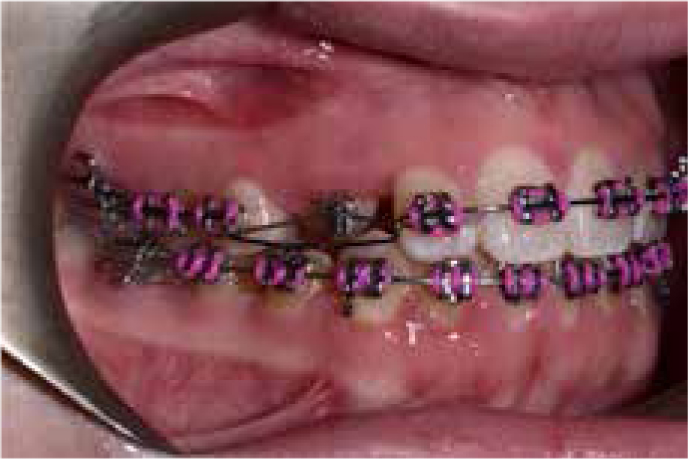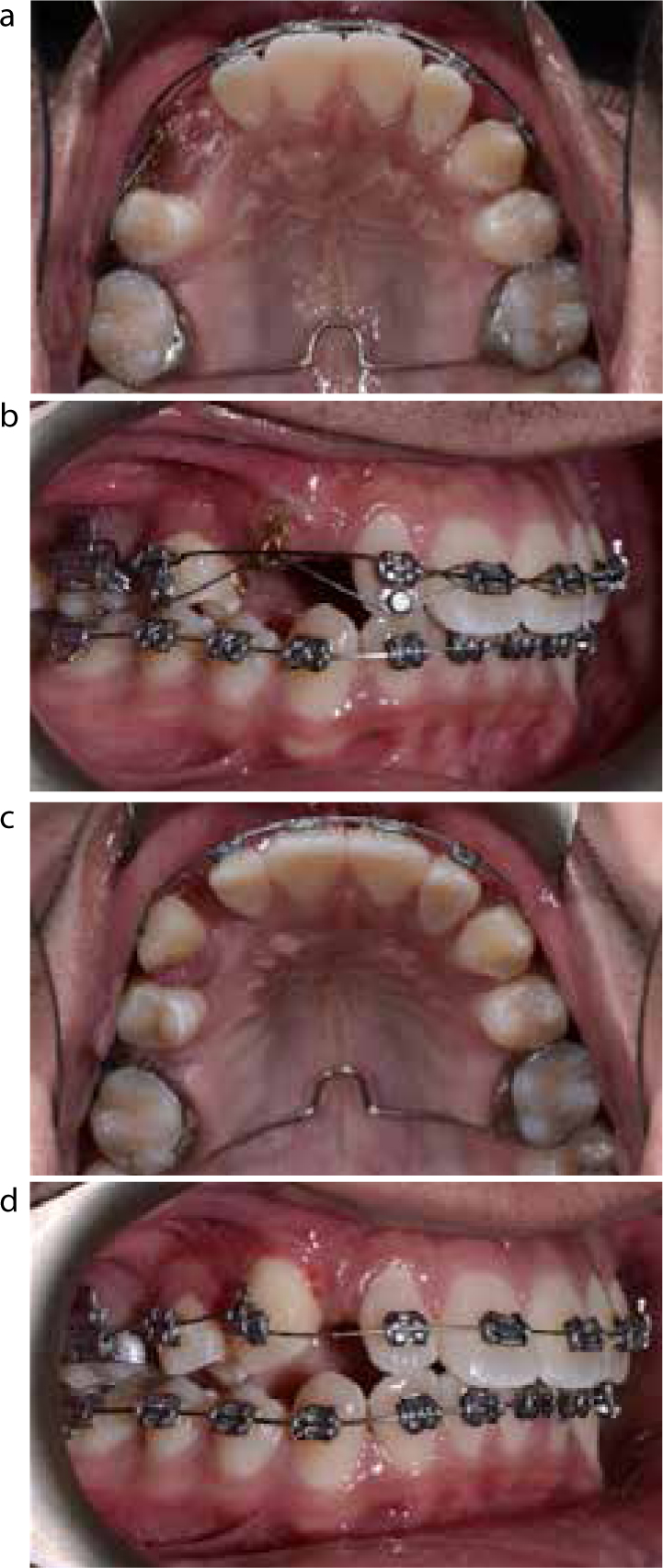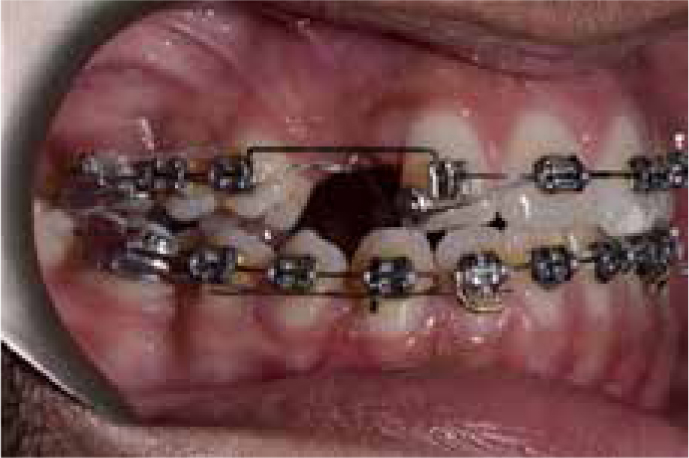Article
The mechanics involved in orthodontic alignment of impacted teeth can be challenging.1 Traction to unerupted teeth that have had a closed exposure is often achieved with nickel-titanium (Ni-Ti) auxiliary archwires, supported by a stainless steel base archwire (‘piggy-back’ archwires).2 This method provides good vertical anchorage and utilizes the super-elastic properties of the Ni-Ti archwires to apply a light force to the tooth.5 Ideally, this force should be light and remain active for a long period before reactivation is necessary,1,2,3,4 but a drawback of this technique is the range of deflection of the auxiliary wire is often limited, resulting in the force becoming inactive relatively quickly.
To overcome this issue, the auxiliary wire can be placed over the occlusal aspect of the orthodontic brackets bonded to the adjacent teeth. This provides a greater deflection of the auxiliary wire that will remain active for a longer duration (Figure 1).

Auxiliary buttons can also be bonded to the adjacent teeth should the clinician wish to increase the deflection of the auxiliary wire even further. The clinical photos in Figure 2 were taken 12 weeks apart and demonstrate the efficiency of this modification to the Ni-Ti piggy-back technique (Figure 2).

Other auxiliaries can be used in conjunction with this technique. For example, an elastomeric chain can be used to change the direction of the force vector applied to the tooth (Figure 3).

The advantage of this clinical tip is that patient recall appointments can be at a normal or increased interval without the traction becoming passive, reducing the number of appointments and improving your service provision.
